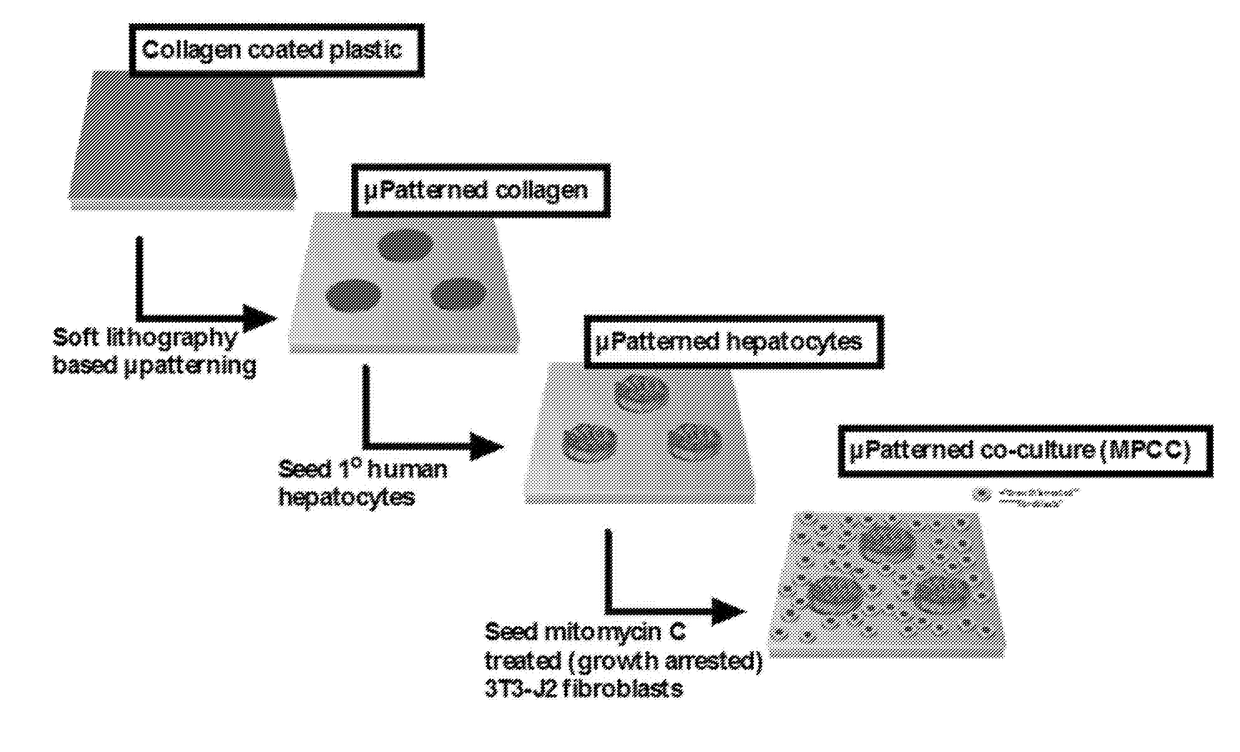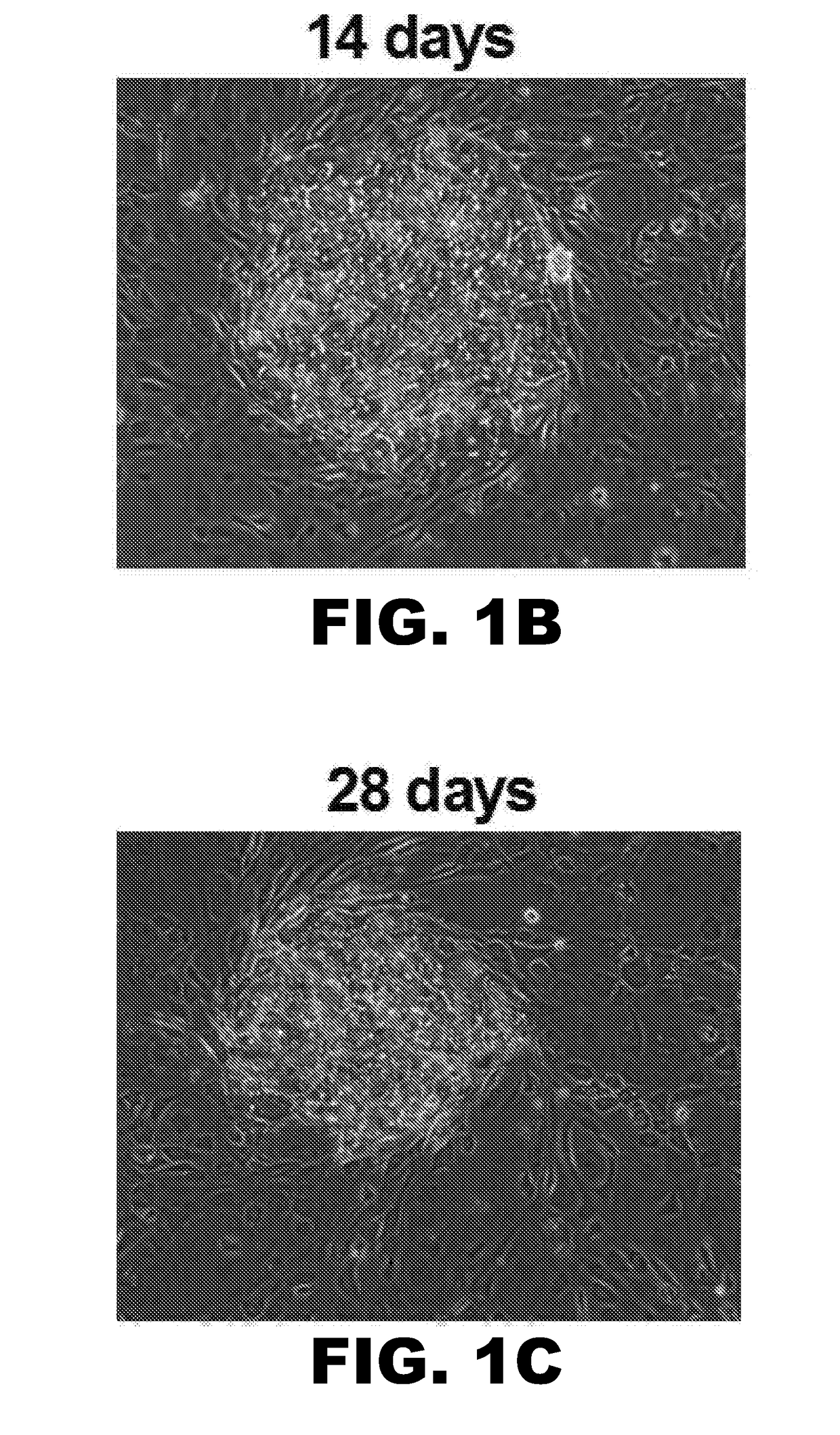Compositions and methods for increasing hepatocyte functional lifetime in vitro
a technology of hepatocytes and culture platforms, applied in the field of cell culture media, can solve the problem that no current culture platform can keep hepatocytes highly functional for that long tim
- Summary
- Abstract
- Description
- Claims
- Application Information
AI Technical Summary
Benefits of technology
Problems solved by technology
Method used
Image
Examples
example 1
g Culture Medium to Enable Proper Comparison of Physiologically Relevant Medium to Traditional Medium
[0084]Traditionally, hepatocyte maintenance medium utilizes bovine serum and excessive amount of glucose as well as insulin. Bovine serum could potentially have proteins which negatively affect hepatocyte insulin pathways on human hepatocytes while it could also contain pathogenic proteins or cause an immune response in humans if used for regenerative medicine purposes. Additionally, high amounts of glucose and insulin are major contributors to fatty liver disease and this is recapitulated in the MPCC system. These abnormalities in culture medium inspired the development of a more physiologic medium that did not contain any animal products, xeno-free medium. Specifically, a medium was formulated that had physiologic glucose (˜5 mM), human serum (in place of bovine serum) and physiologic levels of insulin (0.5-1 pM versus the traditional 1 μM).
[0085]Since glucose levels can be reduced...
example 2
ically Relevant Medium Prolongs the Lifetime of Hepatocytes in Micro Patterned Co-Cultures
[0087]Once the optimal medium formulations were identified, long term studies (10 weeks) were carried out to assess the possibility of culturing hepatocytes in a xeno-free and physiologically relevant medium, where hepatocyte colony morphology, and functions over time was assessed. Surprisingly, physiologically relevant medium was not only compatible with MPCCs, but hepatocyte colony morphology, as assessed by phase contrast imaging, showed dramatic stabilization of hepatocytes compared to traditional medium (FIG. 1). Specifically, hepatocyte morphology and island integrity was diminished by 6 weeks in traditional medium, whereas hepatocyte morphology was greatly retained up to 10 weeks using physiologically relevant medium.
example 3
e Functional Lifetime is Significantly Longer in Physiologic Medium
[0088]Along with hepatocyte morphology, hepatocyte functions were also maintained in physiologic medium. Specifically, when CYP3A4 activity was measured in MPCCs over time, it was found that traditional medium enzyme activity was ˜1% of 1 week levels, while physiologic medium MPCC enzyme activity was ˜60% of 1 week levels (FIG. 2). CYP2A6 enzyme activity was also assessed for 8 weeks, and traditional medium CYP2A6 activity was completely absent by 62 days in culture, while physiologically relevant medium CYP2A6 levels were still 45% of 1 week levels.
[0089]Urea synthesis was also maintained in physiologic medium at 57% and 23% of 1 week levels at 5 and 10 weeks in culture, respectively. Alternatively, urea synthesis of MPCCs in traditional medium was ˜7% and 5% of 1 week levels by 5 weeks and 10 weeks in culture, respectively. Importantly, albumin production was ˜3 fold higher at 3 weeks of culture in physiologic medi...
PUM
| Property | Measurement | Unit |
|---|---|---|
| diameter | aaaaa | aaaaa |
| diameter | aaaaa | aaaaa |
| diameter | aaaaa | aaaaa |
Abstract
Description
Claims
Application Information
 Login to View More
Login to View More - R&D
- Intellectual Property
- Life Sciences
- Materials
- Tech Scout
- Unparalleled Data Quality
- Higher Quality Content
- 60% Fewer Hallucinations
Browse by: Latest US Patents, China's latest patents, Technical Efficacy Thesaurus, Application Domain, Technology Topic, Popular Technical Reports.
© 2025 PatSnap. All rights reserved.Legal|Privacy policy|Modern Slavery Act Transparency Statement|Sitemap|About US| Contact US: help@patsnap.com



